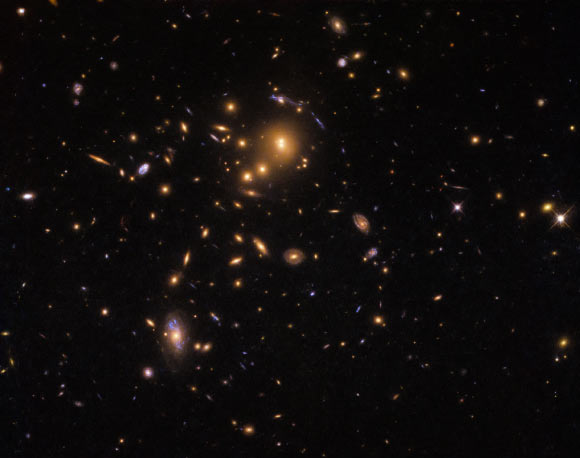SDSS J0915+3826, a giant group of galaxies located approximately 4 billion light-years away, is so massive that its gravity bends light like a lens, making it very useful for peering deep into the early Universe.

This Hubble image shows the strong-lensing galaxy cluster SDSS J0915+3826. Image credit: NASA / ESA / Hubble / Judy Schmidt, www.geckzilla.com.
Albert Einstein predicted in his theory of general relativity that massive objects will deform the fabric of space itself.
When light passes one of these objects, such as a cluster of galaxies, its path is changed slightly.
Called gravitational lensing, this effect is only visible in rare cases and only the best telescopes can observe the related phenomena.
The high sensitivity and fine resolution of the NASA/ESA Hubble Space Telescope allow it to see faint and distant gravitational lenses that cannot be detected with ground-based telescopes whose images are blurred by Earth’s atmosphere.
The gravitational lensing results in multiple images of the original galaxy each with a characteristically distorted banana-like shape or even into rings.
In this particular case, astronomers used the foreground galaxy cluster, SDSS J0915+3826, to study star formation in galaxies lying so far away that their light has taken up to 11.5 billion years to reach our eyes.
These galaxies formed at a very early stage in the lifetime of the Universe, giving astronomers a rare glimpse into the beginning of the cosmos.
Despite their distance, the lensing effects of SDSS J0915+3826 allowed scientists to work out the sizes, luminosities, star formation rates, and stellar populations of individual star-forming clumps within these galaxies.







